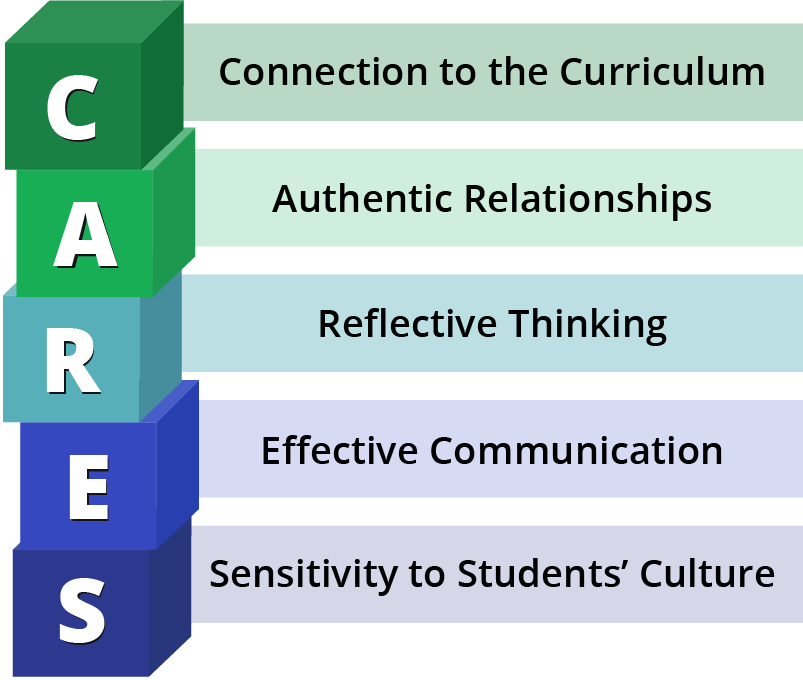Teacher Professional Development
We recommend learning the CARES elements in the following order:
Research has shown that each of the five CARES elements has a significant impact on students and their behavior when used regularly over time. Students who feel known and understood by their teachers report deeper connections academically and to their school. When teachers understand their own cultural heritage, they better understand the differences between themselves and their students and report higher levels of mutual respect with students. In classrooms where students actively learn, teachers welcome exploration, invite cultural differences, make connections to the curriculum, listen attentively to understand how each student is approaching the concept, and use humor and other communication tools to engage students.


1. Sensitivity to Students’ Culture

2. Authentic Relationships

3. Connection to the Curriculum

4. Effective Communication

5. Reflective Thinking
References to Other Relevant Resources:
Hershfeldt, P.A., Sechrest, R., Pell, K.L., Rosenberg, M.S., Bradshaw, C.P., & Leaf, P.J. (2009). Double-Check: A framework of cultural responsiveness applied to classroom behavior. TEACHING Exceptional Children Plus, 6 (2), Article 5, Retrieved December 12, 2009 from https://www.jhsph.edu/research/centers-and-institutes/center-for-prevention-of-youth-violence/field_reports/Article.pdf